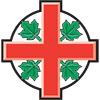People Overseeing the Actions of the General Synod
General Synod is people. The decisions made, and the spirit in which they are made, depend on the collective wisdom of all members. Members contribute experience, skills, interest, ideas, and convictions to decisions and processes that affect the health of the Church as a whole.
Elections for Prolocutor and Deputy Prolocutor
Elections will be held for Prolocutor and Deputy Prolocutor of General Synod on Thursday, June 29 in the morning. The process is outlined in Appendix G of the Handbook of the General Synod of The Anglican Church of Canada,and in the Nominating and Election Procedures for use at General Synod 2023 in the Information Section of the Convening Circular.
Selecting Members of the Council of General Synod
On the afternoon of Friday, June 30, members will assemble in groups according to their ecclesiastical province to select their nominees for the Council of General Synod. The process is outlined in the Nominating and Election Procedures for use at General Synod 2023 in the Information Section of the Convening Circular.
While the selection process itself can get complicated, experience has proven that the procedure works. The outcome leads to a formal election by General Synod of those selected in provincial caucuses.
Standing and Coordinating Committees / Nominations / Elections
Information about the responsibilities of the standing and coordinating committees of General Synod can be found in the Constitution of the General Synod, located in the Handbook of the General Synod of The Anglican Church of Canada (see pages 25-28), and in their Terms of Reference.
Structural and Procedural Matters/Turning Ideas into Actions
Sessional Committees
Sessional Committees are put in place at the beginning of Synod to ensure that Synod accomplishes the goals of the session. For example, the Agenda Committee monitors the daily progress of the agenda and makes necessary adjustments; the Resolutions Committee determines the priority of resolutions and motions; the Nominating Committee receives nominations and presents a slate to Synod; the Expenditures Committee assesses the cost implication of actions proposed to the Synod. Sessional Committees are appointed by the Council of General Synod, in consultation with the Prolocutor, prior to General Synod.
Decision Making
Decisions are made on the floor of Synod by the adoption of motions. Procedural motions determine how the Synod is to function during its session. These are motions such as: to close debate, to amend a motion, to enter a committee of the whole, to go in camera, or to adjourn, among others. The more interesting motions are substantivemotions, which ask the Synod to make a decision on a specific matter. These may be quite simple, such as motions to adopt the minutes or extend courtesies of the house to a guest, or more complex, such as changes to the Declaration of Principles, Constitution, Canons and Rules of Order.
Most decisions are made by a simple majority vote (see below), but some decisions require more complex procedure than others do. Amendments to the Declaration of Principles, for example, require two-thirds majority approval in each Order at two successive sessions of Synod, and in some cases, consent from each Provincial Synod.
The intention is to make sure that the rules and structures reflect the Church’s goals and enable the Church to carry out its service to God’s mission.
Rules of Order
Considering how many decisions need to be made by such a large and diverse group, it is not surprising that the Rules of Order and Procedure in the Handbook of the General Synod of The Anglican Church of Canada cover virtually everything that takes place, or can take place, on the floor of the Synod. In cases where the answer to a procedural question is not clear, the Chairperson decides what procedures will be followed, often after seeking the advice of the Assessors.
In any case, the rules are intended to serve, not stifle, Synod or its members. While you should be familiar with the rules, it is no embarrassment to breach a rule unintentionally. You may wish to consult an Assessor if you are uncertain.
For a discussion of some specific rules for making, debating, and voting on a motion, see The Decision Process below and the Guidelines for the Resolutions Committee. For information about elections refer to the Nominating and Election Procedures for use at General Synod 2023 or speak to a member of the Nominating Committee.
The Decision Process – Turning Ideas into Action
Resolutions and Motions
Ideas reach Synod in the form of resolutions, which have been developed by the various standing and coordinating committees of General Synod, by dioceses or provinces, or by members of General Synod. Ideas may also be in the form of memorials, which come from provinces, dioceses, and individuals and express a concern or opinion. Memorials are expressions of ideas to the General Synod, but do not propose an action or decision. In order for a memorial to be acted upon by Synod, the authors need to shape it into a resolution. Resolutions represent proposed statements or actions of the General Synod. They are the mechanism by which Synod takes any action. If a resolution is adopted, it becomes an Act of Synod. Resolutions are found in the Resolutions section of your Convening Circular.
The Resolutions Committee has clear guidelines on the order in which resolutions come to the floor. Resolutions from the Council of the General Synod or standing committees are given the highest priority. Resolutions not already included in the Convening Circular must be written on the prescribed form (included in the Convening Circular) and submitted to the General Secretary for consideration by the Resolutions Committee, prior to the deadline established.
Often amendments to resolutions, or amendments to amendments, are proposed while a resolution is under consideration. Amendments are a form of procedural motion and must be seconded and put in writing. Only one amendment to a motion or an amended motion is in order at one time. The procedure can get complicated, so it is important to attend to the Chairperson’s directives.
Procedural motions can influence the length and flow of debate, the style of voting, and the order of proceedings on the floor of Synod. Consult the “Motions and Debate” section of the Rules of Order and Procedure in the Handbook of the General Synod of The Anglican Church of Canada (see pages 31-36). (Note that there is a proposal to replace the Rules of Order and Procedure. See Resolution A070.)
Debate
Effective participation in debate is an art. The finest debate artists are those who speak only when they know they have something useful to say. Do not be overly concerned if your contribution is not as articulate as it might be. There will always be members who are more articulate, or less articulate, than the one speaking.
The mover of a motion is allowed to speak for a maximum of five minutes, and the seconder and other speakers for a maximum of three minutes. No one but the mover, who may speak for an additional three minutes at the close of debate, may speak more than once to a single motion. Only members of Synod may speak in debate.
Voting
When the Chairperson perceives that the debate is ended, or when Synod votes to end debate, the question will be put to a vote and no more debate is allowed. (The mover has the right to speak at the end of debate. This is sometimes referred to as the right to reply.) Most motions are decided by a simple majority of the three Orders (Bishops, Clergy and Laity) voting together. There are some types of motions, which require larger majorities (two-thirds), or “Votes by Orders” [i.e., bishops, clergy and laity voting separately]. A vote by dioceses may also be requested. Every resolution has a paragraph at the bottom explaining the procedures for adoption. In addition, where a special type of vote is required, the chairperson will announce it.
In any case, every member must vote; abstentions are allowed only for reasons of conflict of interest, and the chairperson must be notified.
A Word About Financing
Decisions about what actions the Church takes have financial implications. Staff, administration, travel, and communication are just a few of the factors involved. In addition, the national Church financially supports the work of church partners overseas, ecumenical coalitions, and the Council of the North, which provides financial assistance to certain dioceses within Canada.
If a motion involves expenditure of new or additional funds, it must be referred to the General Synod Expenditures Committee for review. The Committee will report on whether or not funds are available and from what source.


